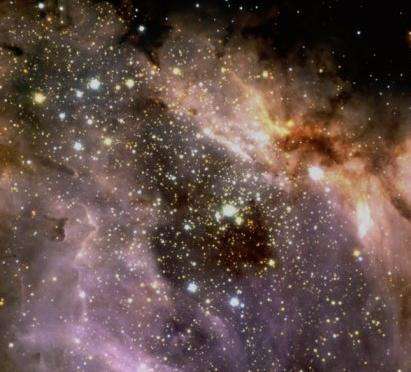(单词翻译:单击)
听力文本
This is Scientific American — 60-Second Science. I'm Christopher Intagliata.
Aside from all the satellites, and the space station orbiting the Earth, there's a lot of trash circling the planet, too. Twenty-one thousand baseball-sized chunks of debris, according to NASA. But that number's dwarfed by the number of small particles. There's hundreds of millions of those.
"And those smaller particles tend to be going fast. Think of picking up a grain of sand at the beach, and that would be on the large side. But they're going 60 kilometers per second."
Sigrid Close, an applied physicist and astronautical engineer at Stanford University. Close says that whereas mechanical damage—like punctures—is the worry with the bigger chunks, the dust-sized stuff might leave more insidious, invisible marks on satellites—by causing electrical damage.
"We also think this phenomenon can be attributed to some of the failures and anomalies we see on orbit, that right now are basically tagged as 'unknown cause.'"

Close and her colleague Alex Fletcher modeled this phenomenon mathematically, based on plasma physics behavior. And here's what they think happens. First, the dust slams into the spacecraft. Incredibly fast. It vaporizes and ionizes a bit of the ship—and itself. Which generates a cloud of ions and electrons, traveling at different speeds. And then: "It's like a spring action, the electrons are pulled back to the ions, ions are being pushed ahead a little bit. And then the electrons overshoot the ions, so they oscillate, and then they go back out again."
That movement of electrons creates a pulse of electromagnetic radiation, which Close says could be the culprit for some of that electrical damage to satellites. The study is in the journal Physics of Plasmas.
The implications of these small particles on future spaceflight is huge. "One of my dreams is interstellar travel. I love Star Trek. I grew up hoping I could build something to get outside our solar system, and I feel like this is just one of the many things we have to worry about. I think the space environment as a whole is still something we need to tackle." Before it tackles any astronauts a long way from home.
Thanks for listening for Scientific American — 60-Second Science Science. I'm Christopher Intagliata.
参考译文
这里是科学美国人——60秒科学。我是克里斯托弗·因塔利亚塔。
在宇宙中,除了人造卫星和绕地运行的空间站以外,还有大量的垃圾在围绕我们的星球运转。根据美国国家航空航天局的数据,太空有2.1万个棒球大小的碎片。但与微粒数量相比的话,这一数字就相形见绌了。因为微粒有数亿个。
“那些较小的微粒往往运行速度非常快。想象在沙滩上拾起一粒沙子,那粒沙子很大。而它们的移动速度为每秒60千米。”
西格丽德·克罗斯是斯坦福大学的应用物理学家和航天工程师。克罗斯表示,较大碎片可能会遭遇穿孔等机械损伤,而尘埃大小的物质可能会引发电学损伤,给卫星留下更隐秘无形的痕迹。
“我们同时认为,这一现象可能是导致运行轨道发生故障和异常的原因,而目前这些异常出现的原因基本上被标记为‘未知原因’。”
克罗斯和同事亚历克斯·弗莱彻依据等离子体物理特性为这一现象建立了数学模型。以下是他们发现的原理。首先,尘埃以不可思议的速度猛烈冲进太空飞船。使部分飞船和自身汽化和电离,进而产生运转速度不同的离子云和电子云。然后:“这就像弹簧作用一样,电子被拉回至离子处,离子则又被向前推进一点点。再然后,电子超越离子,两者产生振动,然后又回到原来的位置。”
电子的这一运动产生了电磁辐射脉冲,克罗斯认为,这可能就是导致人造卫星某些电损伤的罪魁祸首。这项研究发表在《等离子体物理学》期刊上。
这些微粒对未来的太空飞行有着巨大影响。“我其中一个梦想就是星际旅行。所以我非常喜欢《星际迷航》。我从小就希望能创造出飞出太阳系的飞行器,我觉得这只是我们需要担忧的许多事物中的一个。我认为太空环境作为整体仍是需要我们去探索解决的问题。”在它威胁到远离家园的宇航员之前。
谢谢大家收听科学美国人——60秒科学。我是克里斯托弗·因塔利亚塔。
译文为可可英语翻译,未经授权请勿转载!
重点讲解
重点讲解:
1. aside from 除…外(尚有);此外;
例句:Aside from being fun and good exercise, swimming is a very useful skill.
除了有趣与运动外,游泳还是个很有用的技能。
2. pick up 拿起;提起;拾起;捡起;
例句:They depend on the goodwill of visitors to pick up rubbish.
他们相信游客会自觉捡起垃圾。
3. be based on 以…为基础;
例句:Capitalism is based on private ownership.
资本主义是建立在私有制基础上的。
4. as a whole 整体而言;总体上;
例句:As a whole, this article is well written.
总的说来,这篇文章写得很好。


